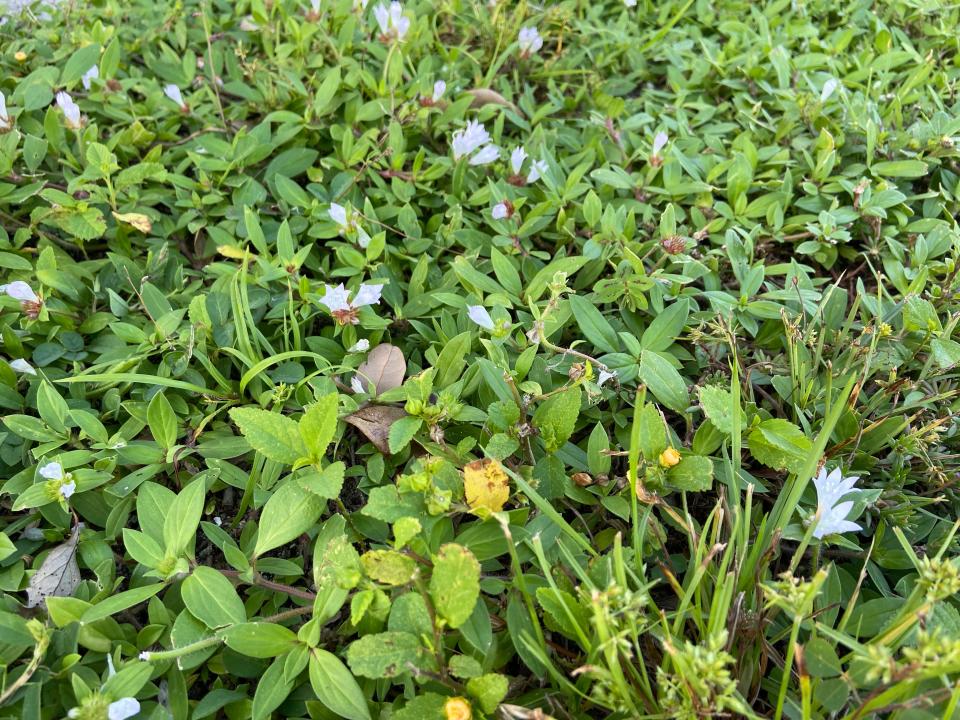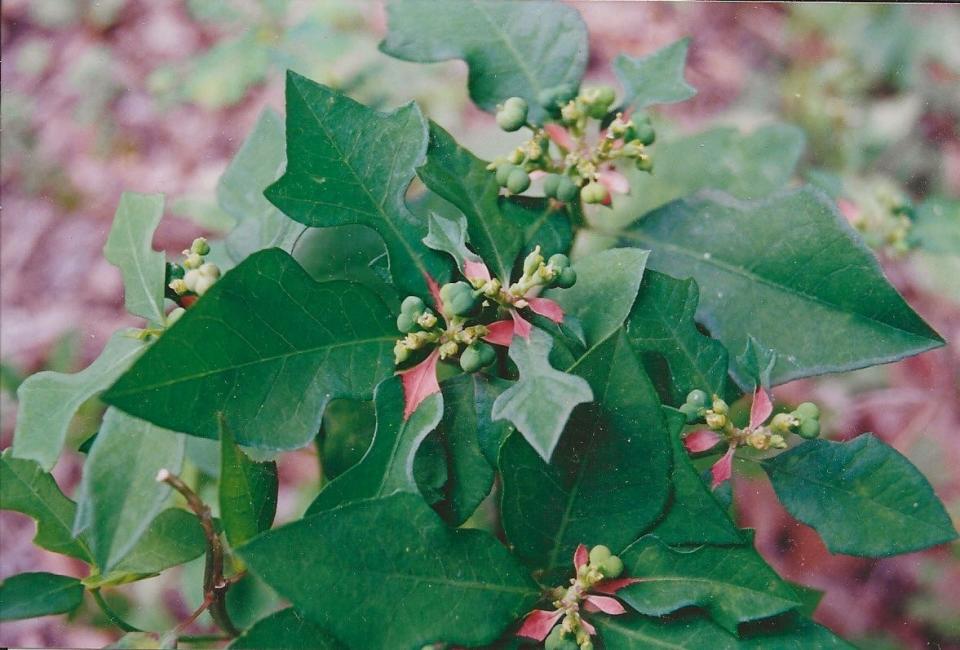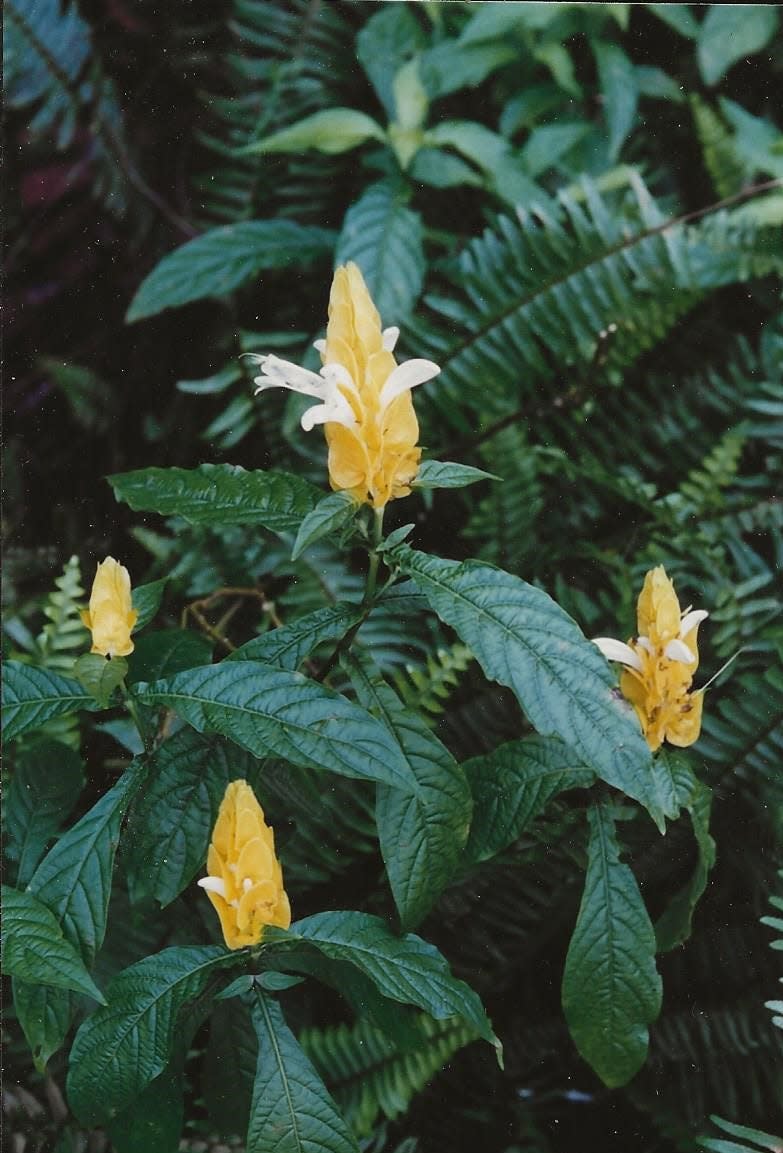Got a wild plant that's not supposed to be in your garden? Don't be so hasty to pull it

Do you have a tendency to yank plants that sprout on their own amid your carefully curated garden beds?
Don't be so hasty. Such plants, known as volunteers, can make your garden more interesting.
Although creeping wood sorrel is an insignificant little plant, it has the distinction of being Florida’s sole native oxalis (O. corniculata).
It’s one of about 800 Oxalis species worldwide. Only a few inches tall, creeping wood sorrel boasts plentiful – if tiny – yellow flowers most of the year. If you’ve gardened for any length of time, it’s likely you’ve yanked some out of flowerbeds: It’s considered a weed despite its native status.
It does, however, invite bees and small butterflies to sip its nectar and is not out of place in certain settings. I’ve allowed this diminutive plant to slowly encircle the bases of palms, where it provides color and attracts pollinators.
Interestingly, the ripe fruit of creeping wood sorrel, like all Oxalis, squeeze out the seeds they contain, scattering them in all directions. If you’ve found your bare legs lightly pelted while walking through a landscape, you were experiencing this phenomenon. Note: Other common volunteers are exotic wood sorrels that boast pink blossoms. They were introduced as ornamentals long ago. Creeping wood sorrel plants are sometimes available online.
Want butterflies and hummingbirds? Few plants attract them like these natives of Africa and Arabia
Another tiny visitor – this one not nearly as common – is an orchid (Zeuxine strateumatica) from Southeast Asia. Naturalized in Florida and Georgia, this 6- to 8-inch-tall terrestrial species is an annual that flaunts spikes of small white blossoms in midwinter. Plants self-sow but are difficult to propagate.
The identity of this species – the world’s only annual orchid – baffled me for years when it popped out of the mulch surrounding a palm tree. This plant found its way into the U.S. via plants imported from Asia.

Of all the exotic volunteers that have made Florida their home away from home, my favorite is Richardia grandiflora. But don’t be fooled by “grandiflora." This 5-inch-tall Richardia – known as Mexican clover – features small white flowers that, depending on the light, can have a pink or blush tinge.
I imagine that "grandiflora" was chosen because of the plant’s habit of colonizing large swaths of ground and densely dotting them with flowers. Mexican clover, though present year-round, is especially noticeable during winter when it’s not competing with vigorous turf grasses.

Most gardeners don’t realize the Mexican poinsettia, so emblematic of our winter holidays, has a cousin native to Florida. The wild poinsettia (P. cyathophora), found throughout our state, is a 1- to 2-foot-tall annual or short-lived perennial. Sometimes bushy, sometimes not, wild poinsettia bears bracts ranging from bright-red or pink to dull green. This plant flowers year-round on bright, sandy sites and is propagated by seeds.
Plant to ponder: Yellow candles

Yellow candles is a 3- to 4-foot-tall herbaceous perennial from Tropical America. Plants flaunt yellow-and-white inflorescences throughout the warm season in full or part-day sun. Propagate yellow candles (Pachystachys lutea) with warm-season cuttings. Note: The species is also called lollipop plant. Available online.
This article originally appeared on The Ledger: Got a wild intruder in your garden? You might just like what it adds

